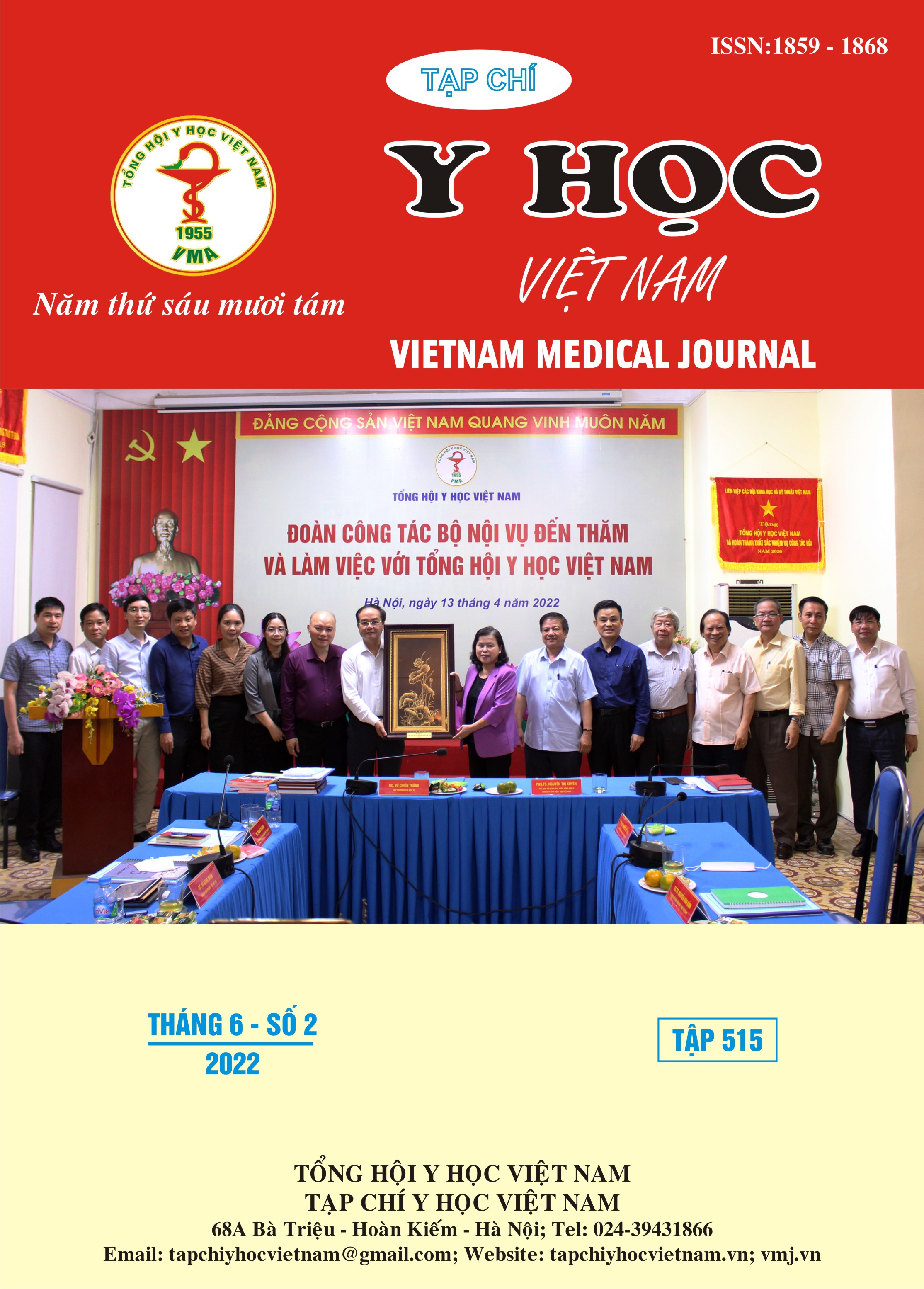MANAGE LEFT VENTRICULAR OVERLOAD IN VENOARTERIAL EXTRACORPOREAL MEMBRANE OXYGENATION WITH INTRA-AORTIC BALLOON PUMP AND TRANSAORTIC CATHETER VENTING
Main Article Content
Abstract
Background: Left ventricular overload is common in cardiogenic shock patients supported with venoarterial extracorporeal membrane oxygenation (VA-ECMO). Less invasive intervention techniques including transaortic catheter venting (TACV) and intra-aortic balloon pump (IABP) have involved in management of this complication. We aimed to describe changes in left ventricular function, outcomes and intervention-related complications of those techniques. Methods: Observational study on patients at Critical Care Department of Cho Ray hospital who was supported with VA-ECMO and had left ventricular overload from January 2020 to June 2021. Data about patient’s backgroud at admission, left ventricular overload, parameters of left ventricular function before and after intervention as well as ECMO and survival outcome were collected. Results: 31 patients were included. 19 (63%) patients were vented with TACV and/or IABP, mostly on the first day of left ventricular overload. 7Fr was most used TACV size with median flow of 100 mL/min. Recovery rate in vented group was 57,9%. Venting with TAVC and/or IABP increase pulse pressure (10mmHg to 30mmHg, p=0,006), ejection fraction (15% to 27%, p=0,010) and aortic valve velocity time integral (AV VTI) (4,2cm to 8,9cm, p<0,001). Intervention-related complication rates was low, including insertion-site bleeding, limb ischemia and TACV occlusion. Conclusion: Venting with TACV and IABP can improve left ventricular functions in VA ECMO patients with left ventricular overload.
Article Details
Keywords
extracorporeal membrane oxygenation, transaortic catheter venting, intra-aortic balloon pump, left ventricular overload
References
2. Bréchot N., Demondion P., Santi F., et al. (2018), "Intra-aortic balloon pump protects against hydrostatic pulmonary oedema during peripheral venoarterial-extracorporeal membrane oxygenation", Eur Heart J Acute Cardiovasc Care, 7 (1), 62-69.
3. Fumagalli R., Bombino M., Borelli M., et al. (2004), "Percutaneous bridge to heart transplantation by venoarterial ECMO and transaortic left ventricular venting", Int J Artif Organs, 27 (5), 410-3.
4. Hong T. H., Byun J. H., Lee H. M., et al. (2016), "Initial Experience of Transaortic Catheter Venting in Patients with Venoarterial Extracorporeal Membrane Oxygenation for Cardiogenic Shock", Asaio j, 62 (2), 117-22.
5. Jung J. J., Kang D. H., Moon S. H., et al. (2021), "Left Ventricular Decompression by Transaortic Catheter Venting in Extracorporeal Membrane Oxygenation", Asaio j, 67 (7), 752-756.
6. Li Y., Yan S., Gao S., et al. (2019), "Effect of an intra-aortic balloon pump with venoarterial extracorporeal membrane oxygenation on mortality of patients with cardiogenic shock: a systematic review and meta-analysis†", Eur J Cardiothorac Surg, 55 (3), 395-404.
7. Lorusso R., Centofanti P., Gelsomino S., et al. (2016), "Venoarterial Extracorporeal Membrane Oxygenation for Acute Fulminant Myocarditis in Adult Patients: A 5-Year Multi-Institutional Experience", Ann Thorac Surg, 101 (3), 919-26.
8. Meani P., Gelsomino S., Natour E., et al. (2017), "Modalities and Effects of Left Ventricle Unloading on Extracorporeal Life support: a Review of the Current Literature", Eur J Heart Fail, 19 Suppl 2, 84-91.
9. Petroni T., Harrois A., Amour J., et al. (2014), "Intra-aortic balloon pump effects on macrocirculation and microcirculation in cardiogenic shock patients supported by venoarterial extracorporeal membrane oxygenation*", Crit Care Med, 42 (9), 2075-82.


